Art Nouveau, a groundbreaking art movement that blossomed in the late 19th and early 20th centuries, is renowned for its distinctive and ornate style. It embraced the sinuous, organic, and decorative elements found in nature, leading to an artistic renaissance that influenced architecture, design, and visual arts. In this article, we’ll explore the Art Nouveau movement and the artworks.
What type of art was created during the Art Nouveau movement?
Paintings, metal fabrication, architecture, print and motif art were made in the Art Nouveau movement.
Art Nouveau was created and popular during which years?
Art Nouveau was created and popularised around the years 1890 to 1910
Where was Art Nouveau made and popularised?
While the Art Nouveau movement “officially” started in Belgium, its inspiration can be traced to the Imperial Modernism movement in Congo, Africa.
What medium (media) and tools were used to make Art Nouveau pieces?
Oil or watercolours on canvas, metal gilded work on gates, architecture and more.
Who are some famous Art Nouveau artists and artworks?
Swan, Rush and Iris by Walter Crane

Alfons Mucha – F. Champenois Imprimeur-Éditeur
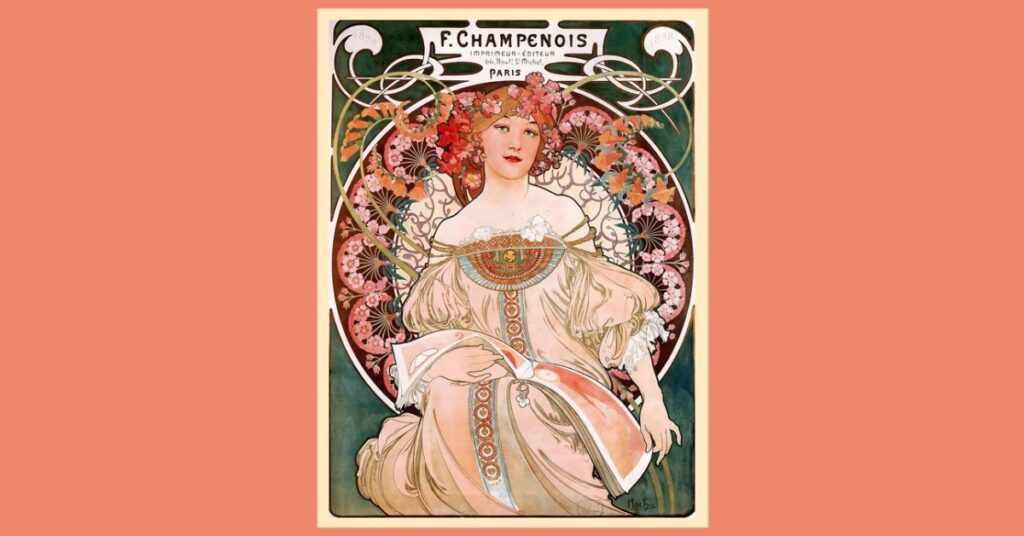
Louis Majorelle – Wall Cabinet
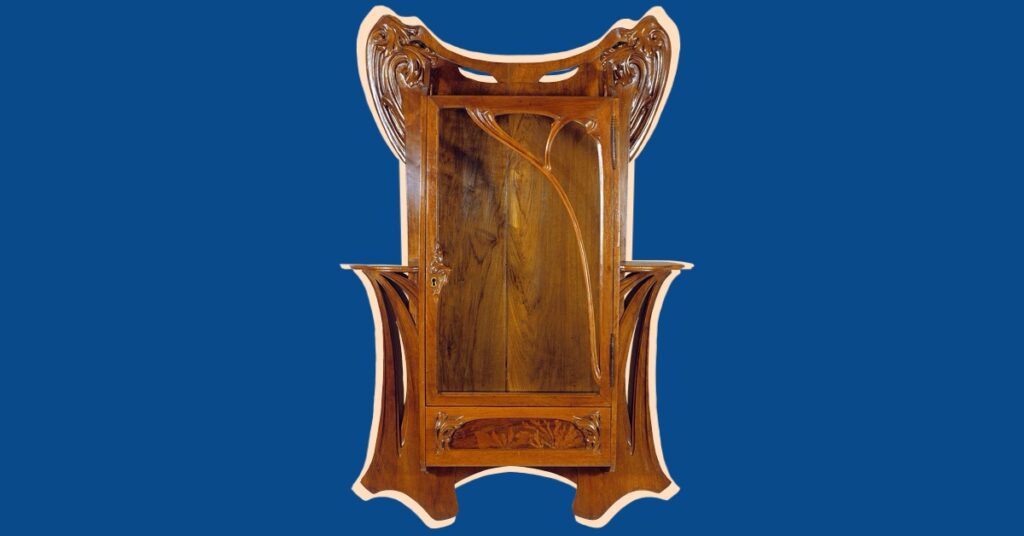
Which art movement(s) came before the Art Nouveau movement?
Modern Art Movement and Imperial Modernism came before the Art Nouveau movement.
Which art movement(s) came after the Art Nouveau movement?
The Art Deco Movement came after Art Nouveau.
Top 7 Artworks of the Art Nouveau Movement
The Seasons by Mucha
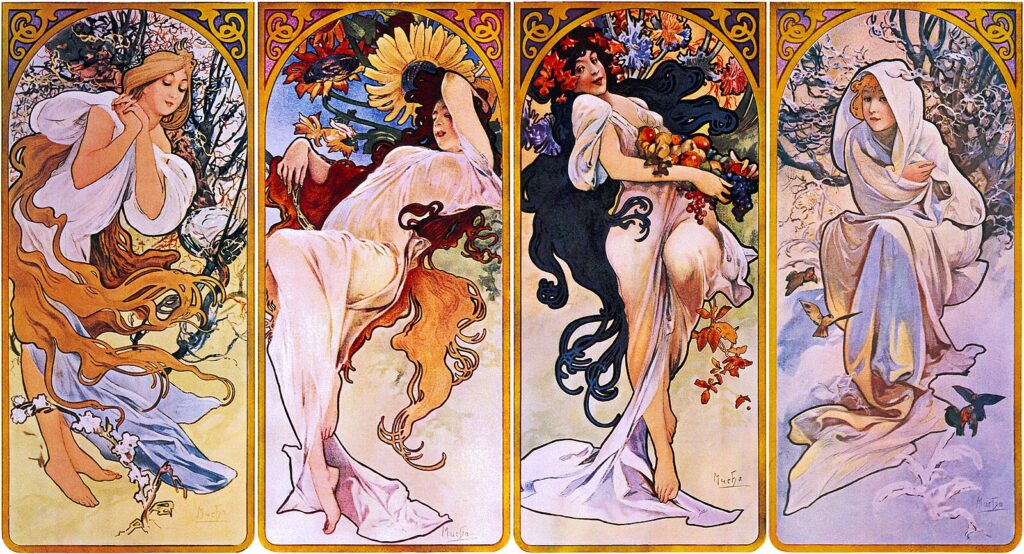
Alphonse Mucha’s “The Seasons” (1896) is a four-panel series that showcases the ornate and decorative sinews of Art Nouveau. Each panel represents a season, featuring a beautiful female figure adorned with elements of nature and the changing seasons.
Mucha’s “The Seasons” series was created as an advertising commission for a calendar. The success of the series brought him fame and recognition, and it remains one of the most iconic representations of the Art Nouveau movement. Mucha’s intricate detailing and his ability to fuse nature and beauty are showcased in these artworks.
The Mucha Woman by Alfons Mucha
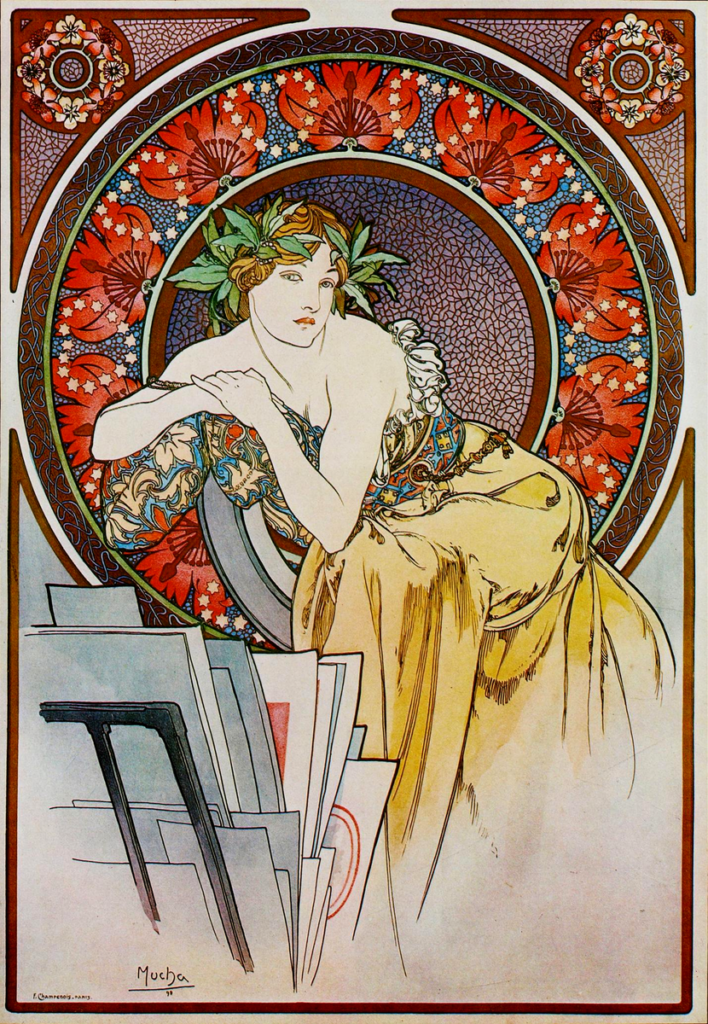
Alphonse Mucha’s “The Mucha Woman” (1897) is an iconic Art Nouveau image. It portrays a serene woman with an intricate halo of stylised flowers and foliage. The painting represents Mucha’s passion for the harmonious blend of feminine beauty and natural elements.
“The Mucha Woman” was created as part of a poster series that Mucha produced for JOB Cigarette Papers. The image became widely popular and is now emblematic of the Art Nouveau style. Mucha’s celebration of the female form and the ornate aesthetics of the movement are well represented in this painting.
The Lady with the Lamp by Alexandre de Riquer
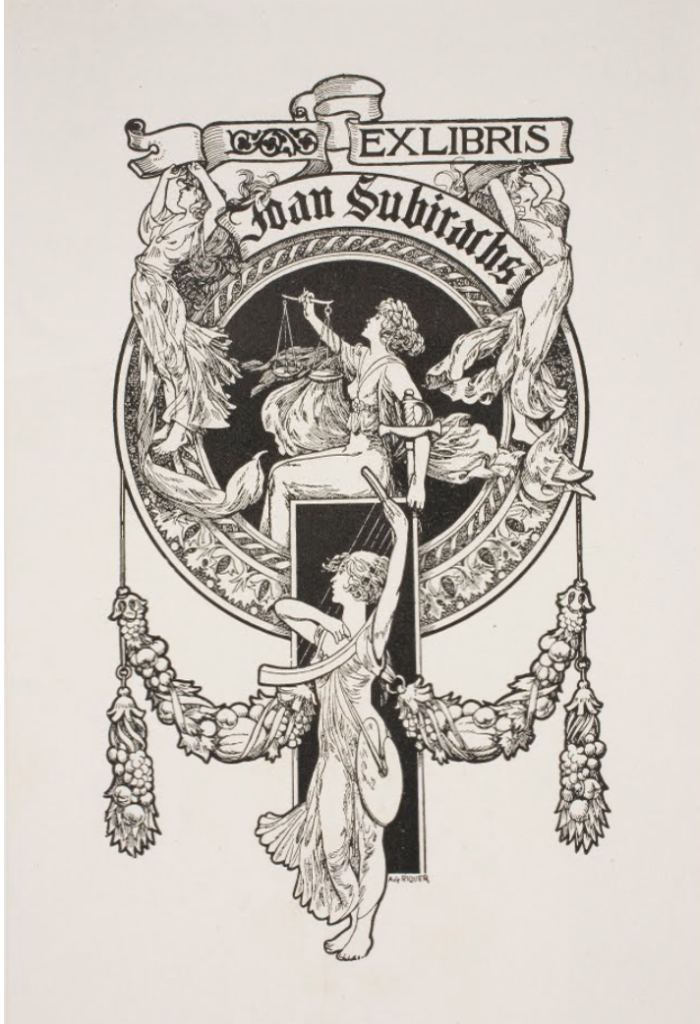
Alexandre de Riquer’s “The Lady with the Lamp” (c. 1900) is an artwork that has a mix of Art Nouveau motifs along with classic Roman acanthus ornaments. The artwork features a graceful woman holding a lamp, surrounded by intricate patterns and delicate forms.
Riquer was a prolific artist and designer associated with the Art Nouveau movement. “The Lady with the Lamp” reflects his dedication to creating works that celebrate beauty and elegance. His use of flowing lines and ornate motifs is a hallmark of the movement.
The Rose by Émile Gallé
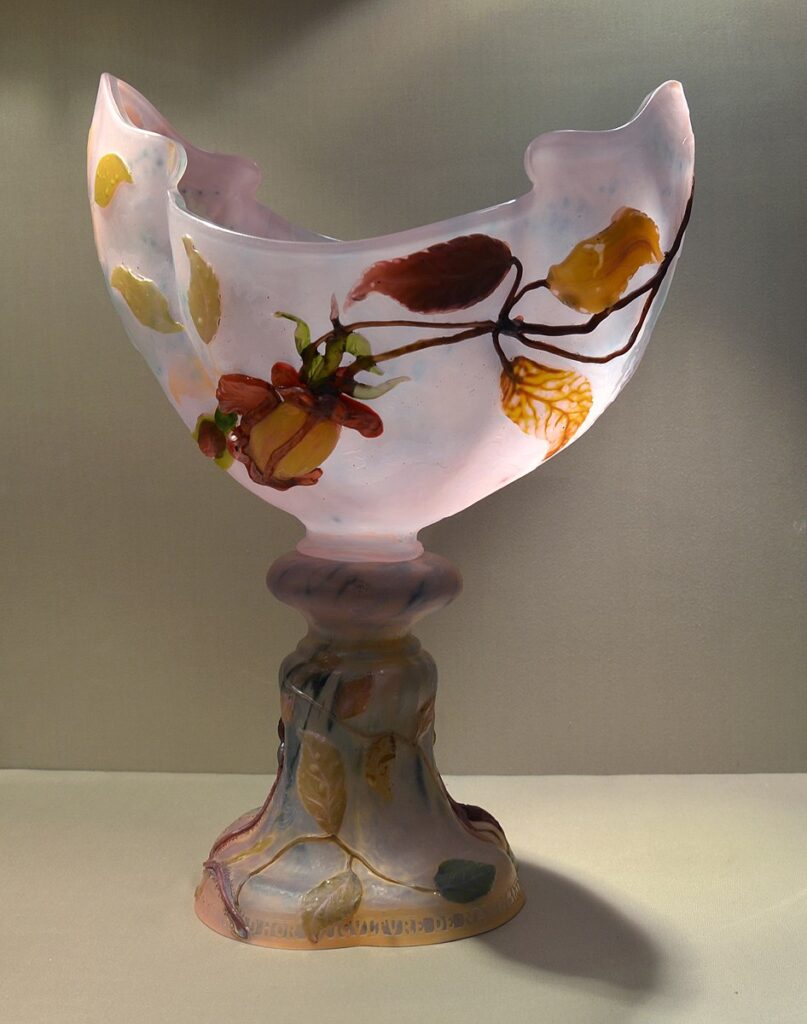
Émile Gallé’s “The Rose” (c. 1900) is an example of Art Nouveau work, reflecting the movement’s fascination with nature and organic forms. The artwork features a single red rose against a backdrop of an oddly shaped chalice.
Émile Gallé was a master of Art Nouveau and was renowned for his glasswork, furniture, and decorative arts. “The Rose” represents his ability to translate the movement’s aesthetic into painting, with its focus on nature and ornamentation.
The Gorgon by Fernand Khnopff

Fernand Khnopff’s “The Gorgon” (c. 1891) is a haunting sculpture that combines Art Nouveau and Symbolist elements. The artwork features a woman’s head, surrounded by intricate tentacles and mysterious symbolism.
Khnopff was a Belgian symbolist and his works often combined elements of Symbolism and Art Nouveau. “The Gorgon” conveys both the mystical and ornamental qualities of the Art Nouveau movement. The sculpture remains a popular work of the era.
Cyclamen by Eugène Grasset
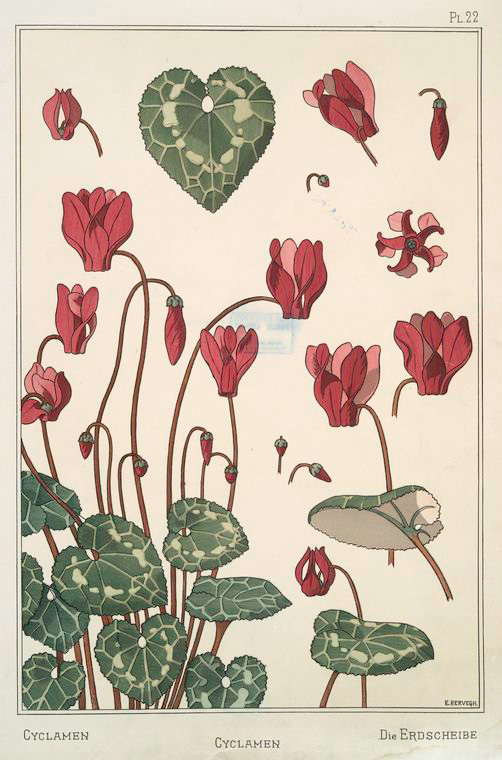
Eugène Grasset’s “Cyclamen” (c. 1897) is a beautiful Art Nouveau painting that exudes the movement’s emphasis on organic and decorative forms. The artwork features a stylised cyclamen flower that almost looks like a stained-glass painting.
Grasset was a prominent Art Nouveau artist and a master of the movement’s aesthetics. “Cyclamen” exemplifies his ability to create works that celebrate nature and intricate ornamentation. His art often drew from the natural world, resulting in captivating interpretations of subjects.
The Art Nouveau movement, with its emphasis on organic sinewy frames, intricate ornamentation, and the celebration of nature’s beauty, left an indelible mark on the world of art. These famous paintings of the movement show the creative processes of the artists who embraced motif art. From Mucha’s passion for feminine beauty and nature to Matisse’s rhythmic and organic compositions, these works continue to captivate art enthusiasts, serving as testaments to the enduring allure and elegance of Art Nouveau.
*Images from Wiki Commons






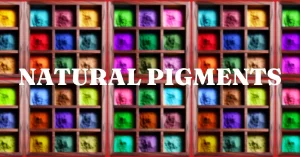
0 Comments